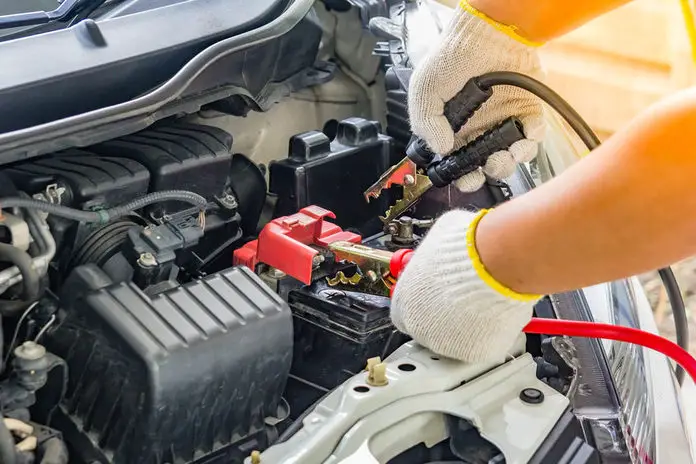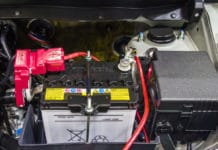
Today, and thanks to technology, you will find various types of lead-acid batteries in the auto-shops. The truth is that all these battery types perform the same work, which is providing the electric power you may need to run your vehicle, for example.
However, every battery model comes with a unique design. Also, the models come with a unique charging style. For example, it’s advisable not to charge an Absorbent glass mat (AGM) battery using a regular charger.
How’s charging an AGM battery different from charging a standard battery? When it comes to AGM vs. Standard battery charging, there are a lot of differences, which include:
● The charging modes are different
● AGM batteries don’t produce hydrogen while charging
● AGM batteries charge slowly
● AGM batteries don’t lose water while charging
To understand everything, the differences between charging a regular battery and an AGM battery, you’ll need first to understand the batteries’ designs. Also, knowing the batteries’ functionality can help you understand why they require a special kind of charging
5 Differences Between AGM and Regular Battery Charger – Let’s Find Out!
1. Use a Charger for Specific Battery
Today, you will find various types of battery chargers in the market. Every model comes with unique specifications. For example, you will discover chargers written AGM on their descriptions. Well, this is something that you must consider. The truth is that you can charge an AGM battery using a standard charger.
From a professional’s point of view, it’s advisable not to use a regular charger on the AGM battery. You can, however, use these standard chargers if you can monitor the charging and adjust the current and voltage based on the battery’s status.
But I highly recommend you to take a look at this article of the best AGM battery charger if you use an AGM battery for your car.
What Happens When I Charge My AGM Battery Using a Standard Charger?
Your mechanic will always tell you that you shouldn’t use a standard charger on an AGM battery. What they won’t stop to say to you is what will happen when you charge the battery using a typical charger.
A standard charger is meant to provide fast and high charging. Charging this battery with this rapid charger kills it within no time if you’re not careful. Whenever you charge the battery using a regular charger, you stand.
From a professional’s point of view, an AGM’s fiberglass nature can’t handle the fast charging nature of the ordinary battery charger. Luckily, technology has brought with it dual-chargers.
That means that you won’t have to worry about the type of charger you’re to use on your battery. All that is needed of you is to switch in between the standard and AGM mode based on the cell in question.
The AGM battery chargers have microprocessors, and which collect info about the battery’s charge status. The microprocessors then adjust the voltage and current to allow the slow charging of your battery.
Unfortunately, to acquire an AGM battery charger or the dual-chargers, you must be willing to part with some good amount of money. The chargers are price a bit higher as compared to a standard charger.
2. Charging Time
When it comes to choosing a battery for your car, you must consider the amount of time needed to charge it completely. The charge-time is what determines how soon you’re likely to use the battery if it runs on you. Standard chargers are designed for fast and high charging. It’s for these reasons that you’re always advised not to use these chargers on your AGM battery.
When it comes to charging speed, the latter takes less time to charge completely. An empty regular battery can take about 10 hours to fully-charge. On the other side, an AGM battery can take up to two days based on its charge status.
Therefore, if you’re looking for a battery model that you can quickly charge, an AGM battery shouldn’t be your priority. But, with the many benefits that come with this line of a cell are hard to ignore.
3. Running Time
By now, you understand how long it takes to charge a standard battery and an AGM battery. The next thing you should be asking, how long does it take to drain the charge completely? From a general perspective, the same way an AGM battery takes long to charge is the same way it takes time to lose all the charge present.
AGM batteries are designed to give your car, for example, a sturdy supply of electricity, for a long time. As opposed to the regular batteries which last a short time, AGM batteries can serve you for a very long time. As stated earlier, an AGM has a low internal resistance.
As a result, you can rely on this type of battery if you require a steady supply of power. Although the battery comes with a high price tag, it’s worth every penny.
A regular battery on the other end is designed to provide you with the power you need, but for a short period. Therefore, if you’re looking for a steady power supply, an AGM battery is what you must consider. The fantastic thing about this battery model is that it’s designed to work correctly even in the harsh weather conditions.
4. Which of the Battery Model Produces Fumes While Charging?
In some cases, lead-acid batteries produce hydrogen gas, which is risky. Regular cells are prone to producing this harmful and odorless gas which can lead to explosions. AGM batteries on the other end are sealed and hence unlikely to produce any fumes while charging.
Besides, the battery contains a catalyst, platinum, which converts the hydrogen produced into water. Therefore, this battery model can easily be charged in a standard home setting without fearing that an explosion might occur.
5. What Happens When You Charge a Battery?
In both the AGM and regular battery, there is an electrolyte. What is an electrolyte? You may ask. Well, an electrolyte is a liquid you find inside the cell, which holds the electrons in place. The electrolyte is a combo of sulfur and other parts. When it comes to an empty battery, the sulfur and the particles are usually stuck to the plates.
Charging the battery helps break the sulfur build up on the plate freeing the electrons. The free particles are put back into the electrolyte where they can move freely and hence the charge. When it comes to a standard battery, the electrolyte comprises of water as well. It’s for this reason that you’re needed to add water once in a while when using a regular battery.
The instant charging never hurts the components of this battery’s electrolyte. Also, a standard charger can be used immediately after charging as opposed to an AGM battery, which should be given time to rest.
A shallow digging over the AGM battery’s specifications will tell you that the battery is maintenance-free. This means that you won’t have to go adding water now and then. You may ask, how does the battery get the water back?
For this model of battery, there is platinum, a catalyst that converts the hydrogen produced while charging into water. As a result, there is no hydrogen gas released during the charging process, and so it doesn’t require any venting.
Once the catalyst is used, it’s gone for good. From an expert’s point of view, it’s advisable to prevent the need to use the catalyst in the best way possible. How can you stop the catalyst from being overused? Charging the AGM battery slowly is the only remedy to this problem. Charging the battery slowly means that the battery won’t get hot.
Conclusion
AGM batteries and regular batteries charge similarly. The difference arises during the charging process as the AGM batteries require more time to charge fully as opposed to the standard batteries.
By reading this article, you will understand in detail, what happens when you charge each of the models. Read the piece thoroughly because it can help you during the decision-making process when buying the battery.
Sources:
1. What is AGM Battery Technology? – Northern Arizona Wind & Sun
2. Determining Charge Time – Batteries by Fisher
3. 5 Battery Types Explained – Sealed, AGM, Gel – BatteryStuff.com





